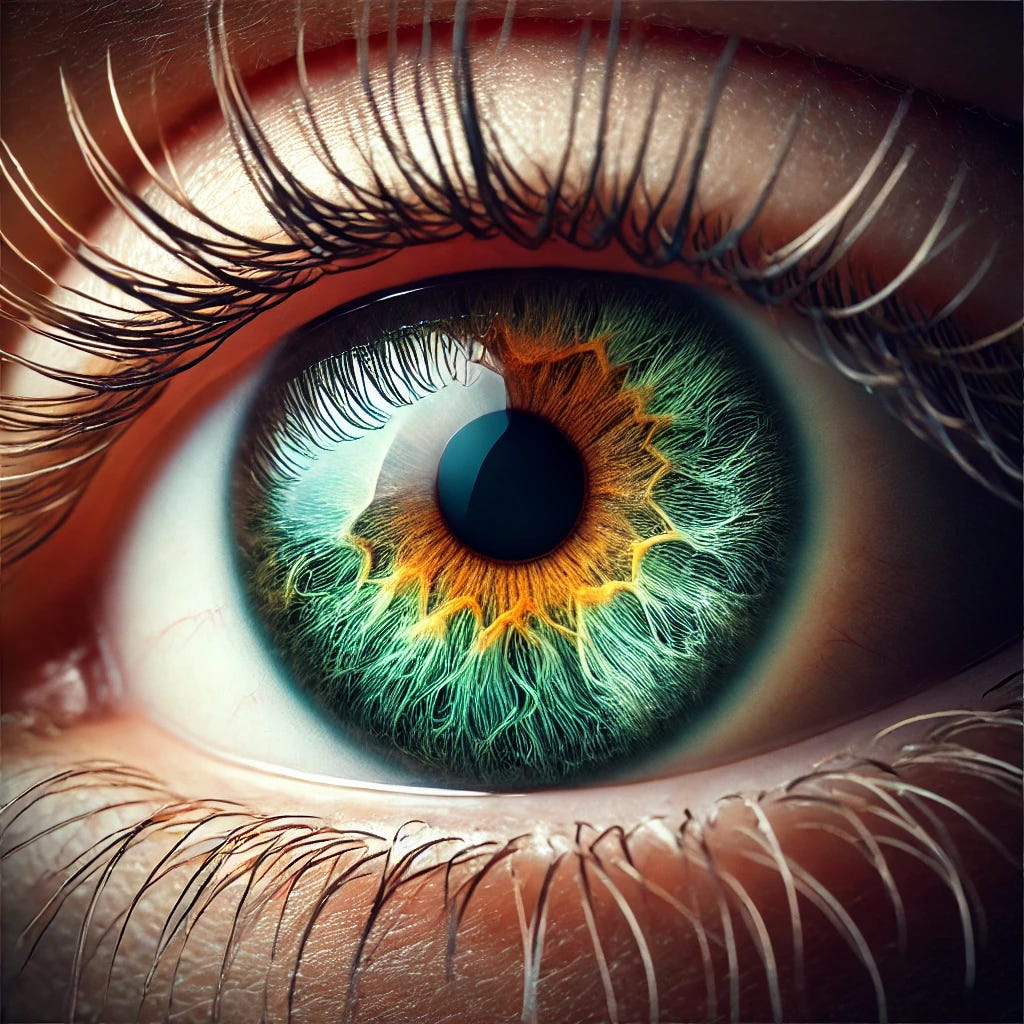The Truth About Eye Floaters: Are You Ignoring a Serious Warning Sign?
Those tiny specks, cobwebs, or squiggly lines floating across your vision might seem like a mere annoyance, but they could be telling you something important about your eye health. As a holistic ophthalmologist, I've seen countless patients dismiss these visual phenomena, only to later wish they had paid attention sooner. Let's dive deep into understanding eye floaters and when they might signal a need for immediate medical attention.
What Are Eye Floaters?
Eye floaters are those tiny shadows you see moving across your field of vision. They appear as dark specks, threadlike strands, or cobweb-shaped formations that seem to dart away when you try to look at them directly. While they might appear to be in front of your eye, they're actually tiny clumps of material floating inside your eye's vitreous humor – the gel-like substance that fills your eyeball.
The Natural Aging Process vs. Warning Signs
Most eye floaters are a natural part of aging. As we get older, the vitreous begins to liquefy and shrink, causing tiny fibers within it to clump together. This process, known as posterior vitreous detachment (PVD), typically occurs after age 50 and is generally harmless.
However, certain characteristics of floaters should never be ignored:
Red Flag Symptoms:
Sudden Increase in Floaters
A dramatic increase in the number of floaters, especially within hours or days, can indicate a posterior vitreous detachment (PVD) or, more seriously, a retinal tear. While a PVD itself isn't typically dangerous, it can sometimes lead to retinal complications that require immediate attention. Think of it like seeing a shower of black dots or insects in your vision – this isn't normal and needs prompt evaluation.
Flashes of Light
If you notice bright flashes of light, particularly in your peripheral vision, this could indicate that your retina is being tugged or torn. These flashes might appear as:
Lightning streaks in your vision
Sparkles or camera-like flashes
Arcs of light in the corner of your eye When combined with new floaters, these flashes are particularly concerning and warrant an emergency eye examination.
Dark Shadows or Curtains
One of the most serious warning signs is the appearance of a dark shadow or curtain effect in your vision. This often starts in your peripheral vision and can move towards the center. This symptom strongly suggests retinal detachment – a true eye emergency that can lead to permanent vision loss if not treated within hours to days.
Post-Trauma Floaters
Any new floaters appearing after an eye or head injury require immediate medical attention. Even seemingly minor trauma can cause internal eye damage that may not be immediately painful but could threaten your vision. This includes:
Sports injuries
Car accidents
Falls
Any direct blow to the eye or head
Floaters with Underlying Health Conditions
People with certain health conditions need to be particularly vigilant about new floaters. High-risk conditions include:
Diabetes: Due to the risk of diabetic retinopathy
High myopia (severe nearsightedness): Increases risk of retinal detachment
Recent eye surgery: Can increase risk of retinal complications
History of eye inflammation: May indicate a recurrence
Autoimmune conditions: Can affect eye health
Additional Warning Signs to Monitor:
Vision Loss: Any sudden decrease in vision, whether central or peripheral
Color Changes: Tinting or darkening of vision
Eye Pain: Especially when accompanied by new floaters
Double Vision: New onset with floaters
Reduced Visual Field: Any new blind spots or visual field defects
Time Factors to Consider:
Sudden Onset: New symptoms appearing within minutes to hours are more concerning than gradual changes
Progression: Worsening symptoms need more urgent attention
Time of Day: Floaters that are significantly worse in the morning might indicate inflammatory conditions
Recent Changes: Any dramatic change in existing floaters patterns
Remember: The key difference between normal floaters and warning signs is the suddenness and severity of changes. While a few stable floaters are usually nothing to worry about, any sudden change or combination of the above symptoms requires prompt professional evaluation. It's always better to have an unnecessary examination than to risk permanent vision loss by waiting too long.
The Holistic Perspective
While conventional medicine often takes a "wait and watch" approach to benign floaters, a holistic view considers them potential indicators of overall health issues. This integrated approach examines how various body systems and lifestyle factors might contribute to or exacerbate eye floaters.
Systemic Health Connections
Dehydration and Fluid Balance
Research has shown that chronic dehydration can affect the composition and stability of the vitreous humor. When the body is consistently dehydrated:
The vitreous gel becomes more concentrated
Protein structures may be more likely to clump together
The natural renewal of eye fluids is impaired. Studies suggest that maintaining optimal hydration may help reduce the perception of floaters and support overall eye health.
Nutritional Factors
Several nutritional deficiencies have been associated with increased floater formation:




